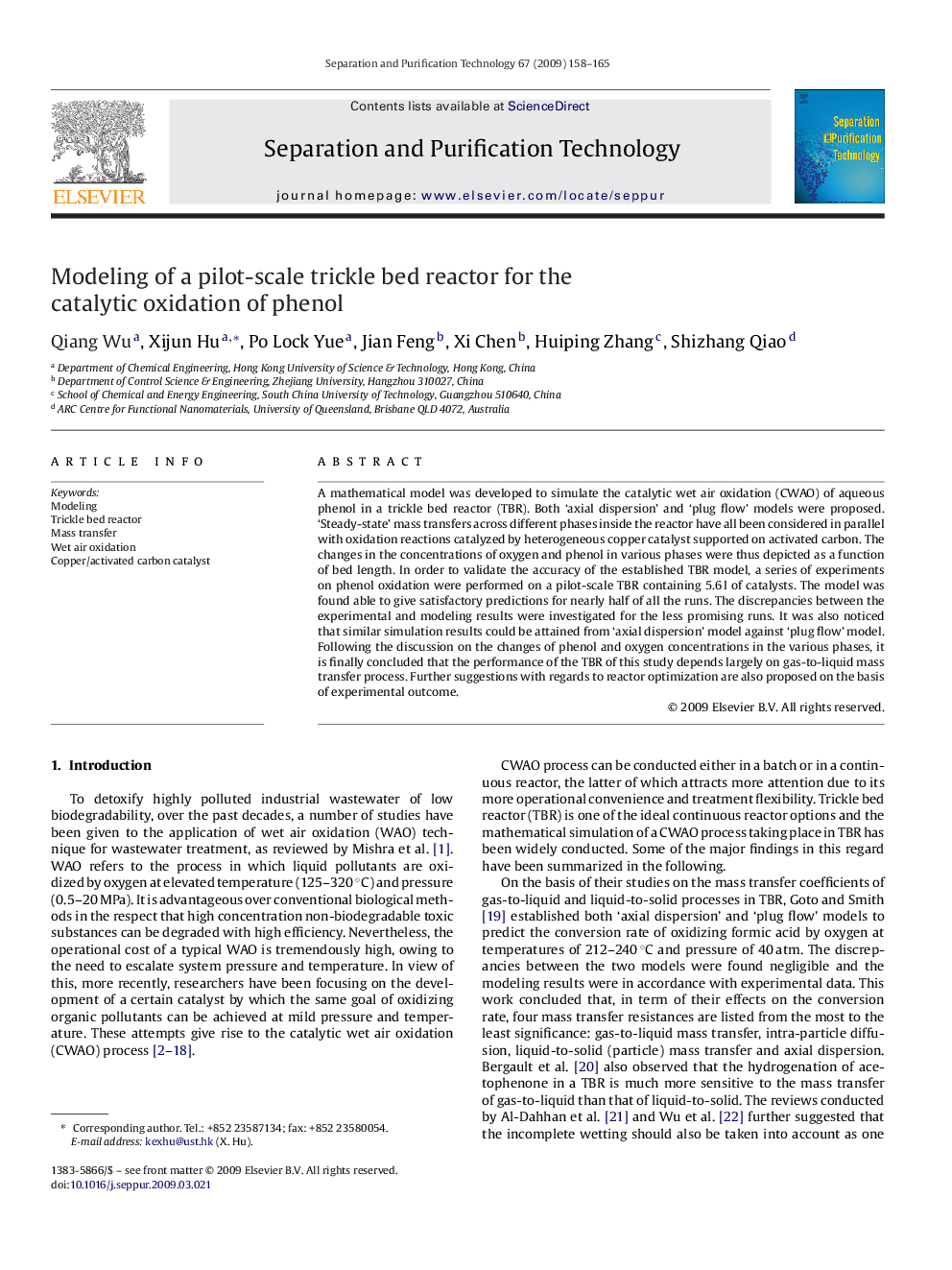| Article ID | Journal | Published Year | Pages | File Type |
|---|---|---|---|---|
| 643192 | Separation and Purification Technology | 2009 | 8 Pages |
A mathematical model was developed to simulate the catalytic wet air oxidation (CWAO) of aqueous phenol in a trickle bed reactor (TBR). Both ‘axial dispersion’ and ‘plug flow’ models were proposed. ‘Steady-state’ mass transfers across different phases inside the reactor have all been considered in parallel with oxidation reactions catalyzed by heterogeneous copper catalyst supported on activated carbon. The changes in the concentrations of oxygen and phenol in various phases were thus depicted as a function of bed length. In order to validate the accuracy of the established TBR model, a series of experiments on phenol oxidation were performed on a pilot-scale TBR containing 5.6 l of catalysts. The model was found able to give satisfactory predictions for nearly half of all the runs. The discrepancies between the experimental and modeling results were investigated for the less promising runs. It was also noticed that similar simulation results could be attained from ‘axial dispersion’ model against ‘plug flow’ model. Following the discussion on the changes of phenol and oxygen concentrations in the various phases, it is finally concluded that the performance of the TBR of this study depends largely on gas-to-liquid mass transfer process. Further suggestions with regards to reactor optimization are also proposed on the basis of experimental outcome.
